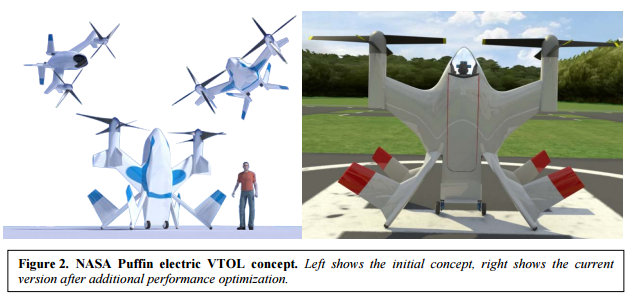Uber hires NASA engineer to develop flying cars
by noreply@blogger.com (brian wang) from NextBigFuture.com on (#2C0M0)
Mark Moore wrote a paper in 2011 that described how to make Vertical Takeoff and Landing craft using electric propulsion.
Electric propulsion offers dramatic new vehicle mission capabilities, not possible with turbine or reciprocating engines; including high reliability and efficiency, low engine weight and maintenance, low cooling drag and volume required, very low noise and vibration, and zero emissions. The only penalizing characteristic of electric propulsion is the current energy storage technology level, which is set to triple over the next 5-10 years through huge new investments in this field. Most importantly, electric propulsion offers incredible new degrees of freedom in aircraft system integration to achieve unprecedented levels of aerodynamic, propulsive, control, and structural synergistic coupling. A unique characteristic of electric propulsion is that the technology is nearly scale-free, permitting small motors to be parallelized for fail-safe redundancy, or distributed across the airframe for tightly coupled interdisciplinary functionality without significant impacts in motorcontroller efficiency or specific weight. Maximizing the potential benefit of electric propulsion is dependent on applying this technology to synergistic mission concepts. The vehicle missions with the most benefit include those which constrain environmental impact (or limit noise, exhaust, or emission signatures) are short range, or where large differences exist in the propulsion system sizing between takeoff and cruise conditions. Electric propulsion offers the following unique capabilities that other propulsion systems can't provide for short range Vertical Takeoff and Landing (VTOL) aircraft; elimination of engine noise and emissions, drastic reduction in engine cooling and radiated heat, drastic reduction in vehicle vibration levels, drastic improvement in reliability and operating costs, variable speed output at full power, for improved cruise efficiency at low tip-speed, elimination of high/hot sizing penalty, and reduction of engine-out penalties.

Uber had previously published in 2016 a 99 page document of their plan for ridesharing flying vehicles.
Uber's plan calls for transforming the tops of parking garages, existing helipads, and unused land surrounding highway interchanges to create a network of "vertiports" and "versistops".
Read more










Electric propulsion offers dramatic new vehicle mission capabilities, not possible with turbine or reciprocating engines; including high reliability and efficiency, low engine weight and maintenance, low cooling drag and volume required, very low noise and vibration, and zero emissions. The only penalizing characteristic of electric propulsion is the current energy storage technology level, which is set to triple over the next 5-10 years through huge new investments in this field. Most importantly, electric propulsion offers incredible new degrees of freedom in aircraft system integration to achieve unprecedented levels of aerodynamic, propulsive, control, and structural synergistic coupling. A unique characteristic of electric propulsion is that the technology is nearly scale-free, permitting small motors to be parallelized for fail-safe redundancy, or distributed across the airframe for tightly coupled interdisciplinary functionality without significant impacts in motorcontroller efficiency or specific weight. Maximizing the potential benefit of electric propulsion is dependent on applying this technology to synergistic mission concepts. The vehicle missions with the most benefit include those which constrain environmental impact (or limit noise, exhaust, or emission signatures) are short range, or where large differences exist in the propulsion system sizing between takeoff and cruise conditions. Electric propulsion offers the following unique capabilities that other propulsion systems can't provide for short range Vertical Takeoff and Landing (VTOL) aircraft; elimination of engine noise and emissions, drastic reduction in engine cooling and radiated heat, drastic reduction in vehicle vibration levels, drastic improvement in reliability and operating costs, variable speed output at full power, for improved cruise efficiency at low tip-speed, elimination of high/hot sizing penalty, and reduction of engine-out penalties.

Uber had previously published in 2016 a 99 page document of their plan for ridesharing flying vehicles.
Uber's plan calls for transforming the tops of parking garages, existing helipads, and unused land surrounding highway interchanges to create a network of "vertiports" and "versistops".
Read more